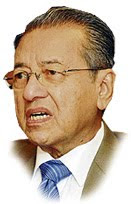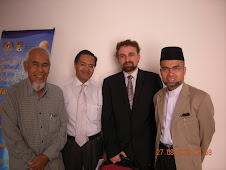Saturday September 12, 2009
A test for Islamic home financing?
By THEAN LEE CHENG
WHEN Islamic home financing came on the scene, interest rates were neither as low, nor as attractive, as today. House buyers opt for them because the “interest”, or what banks called “profit sharing”, was capped at 10%.
Having seen interest rates going up to 14% during the 1997/98 crisis, 10% may be acceptable for some of them. How times have changed! Today, it is still volatile but interest rates are also at a 33-year low. And it looks like it will remain low for a while.
Most of us want to finish paying off our mortgages as soon as possible. Depending on how young one is, home buyers give themselves a time line of about 10 to 15 years to pay up their mortgages. A 30-year-old may consider a longer tenure.
Under today’s low interest regime, what are house buyers leaning towards? The scenario seems fuzzy.
Three banks interviewed say Islamic financing for properties are growing and Bank Negara Malaysia’s statistic testify to that. However, bank officers say customers prefer conventional loans.
Foreign banks OCBC and HSBC decline to answer questions on Islamic property financing. A marketing officer with OCBC says he is referring Islamic financing enquiries to local banks. Ironically, both HSBC and OCBC have set up Islamic banking outlets.
Phone enquiries at CIMB and Maybank suggest interest among house buyers is towards conventional loans at the moment because of the low interest regime. A second reason may be due to house buyers’ interest to pay up the loan as quickly as possible.
“Generally, those who opt for an Islamic packages are not in a hurry to pay up the loan,” says a bank source.
Paradoxically, these same banks report healthy growth numbers for its Islamic packages.
Maybank Islamic Bhd executive vice-president, acting CEO Ibrahim Hassan says financing of residential and non-residential properties grew at an average rate of 6% from 2007 till June 2009.
It is expecting growth rates of 8% and 12% for financing of residential and non-residential properties respectively. Customers are diverse – Malays make up half of them, Chinese 37%, Indians 8% and others 5%.
The majority are categorised under the mass affluent segment with total financial assets ranging between RM100,000 to RM400,000.
At present, residential properties (landed and condominiums) portfolio comprises a fifth of bank’s total financing, while non-residential properties accounts for almost 3%.
Over at CIMB, they expect to close the year on a strong note for its Islamic property financing. It sold more than RM300mil of its flexi Islamic home package within the first three months of its launch, says CIMB Islamic CEO Badlisyah Abdul Ghani.
CIMB’s 2007 and 2008 growth for Islamic property financing was RM100mil and RM1bil respectively. The introduction of new products last year and this year gave them an average growth rate of about 100% year-on-year.
Badlisyah says its growth rate for the first quarter of this year exceeded that of the industry’s growth; putting their overall Islamic property financing market share at 9.8% (RM2.5bil out of RM25.7bil) as at June 2009. It was RM6mil in 2005.
CIMB Islamic now ranks seventh out of 16 Islamic banks for the financing of residential properties in Malaysia.
He says this year, new bookings of Islamic property financing are about 50% of total property financing for the group (CIMB Bank + CIMB Islamic Bank). Our market share has moved from 11% in 2006 to about 14% of the entire industry in the first half of this year, he says.
While the healthy growth story is also being trumpeted at Bank Simpanan Nasional (BSN), the story is slightly different but no less interesting. BSN is currently promoting its Islamic home financing, but unlike Maybank and CIMB, the rates are fixed. BSN is the third largest bank after Maybank and CIMB in terms of branches.
The bank is promoting a five-year low instalment package, with variants, where rates will be as low as 1.95% for the first two years and 4.79% for the next three years. Thereafter, it is fixed at 5.88%. This package is for loans up to RM100,000 for completed properties. Customers pay for the legal fees. The offer ends Dec 31. (See table for comparison with another variant)
BSN deputy chief executive (consumer banking and business development) Norazian Ahmad Tajuddin says as of June 30 this year, BSN has RM3bil mortgages, a third of which are under Islamic financing.
BSN has dispersed Islamic property loans totalling RM727.9mil in 2007. This represents a 36% growth rate; they started from a low base.
Last year, it amounted to RM821.9mil, representing a growth rate of 13%. The bank expects a 10% growth this year. As of July this year, its Islamic property financing is RM846mil.
Norazian says these are healthy numbers for them. “Please do not compare us with other local banks; in value terms, our numbers are small. We are starting slow and BSN is not like other commercial banks. We pride ourselves as a provider of banking services at reasonable rates. We are evolving and provide services to all levels of society from the poor to the rich. But the very rich don’t come to us.
“We like mortgages because it provides a steady stream of income for at least 15 years,” she says.
The national savings bank will have five Islamic banking outlets by the end of this year, and adding 11 more by the end of next year. It has a total of 377 branches.
Says Norazian: “Our customers are questioning if BSN offers Islamic banking. So like other banks, we will open Islamic banking outlets.” They are targeting customers in Klang Valley and Johor, the growth areas and those who buy to stay. More than 90% of its customers are Malays.
A quick check with Bank Negara Malaysia’s website shows that monthly Islamic house financing is growing steadily. For June 2008, it recorded RM17.83bil while June 2009, it reached RM20.40bil.
Subscribe to:
Post Comments (Atom)







































No comments:
Post a Comment